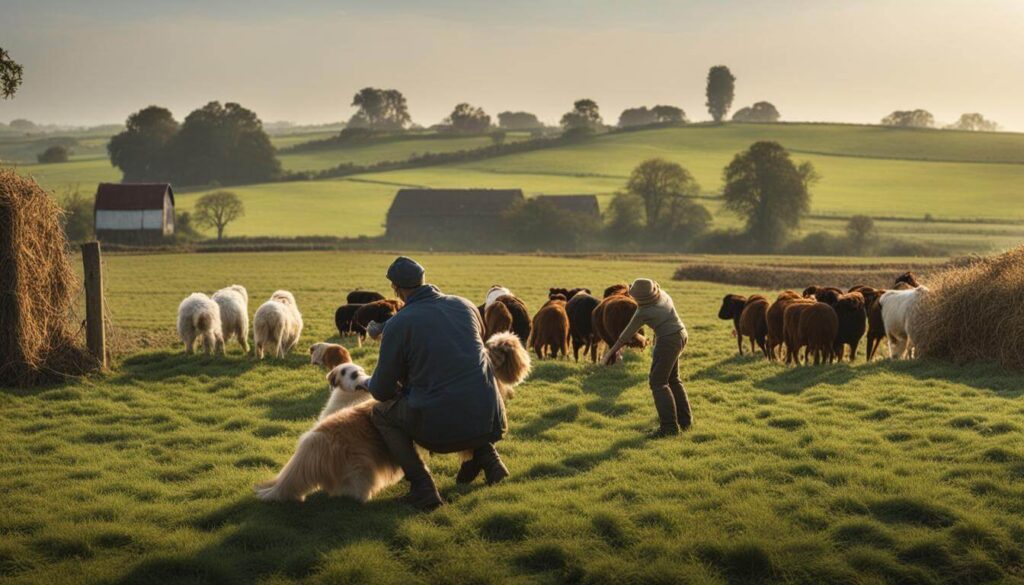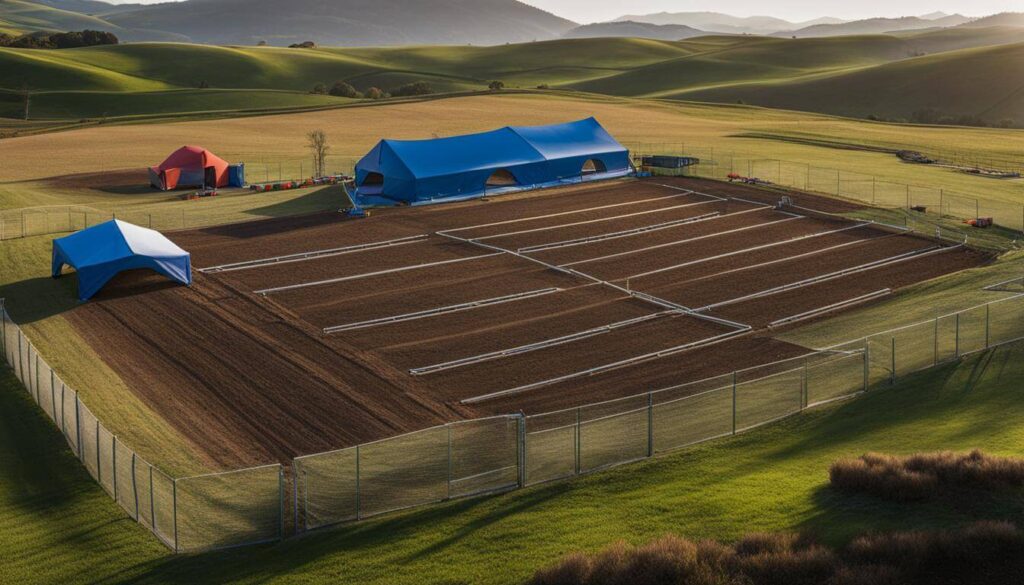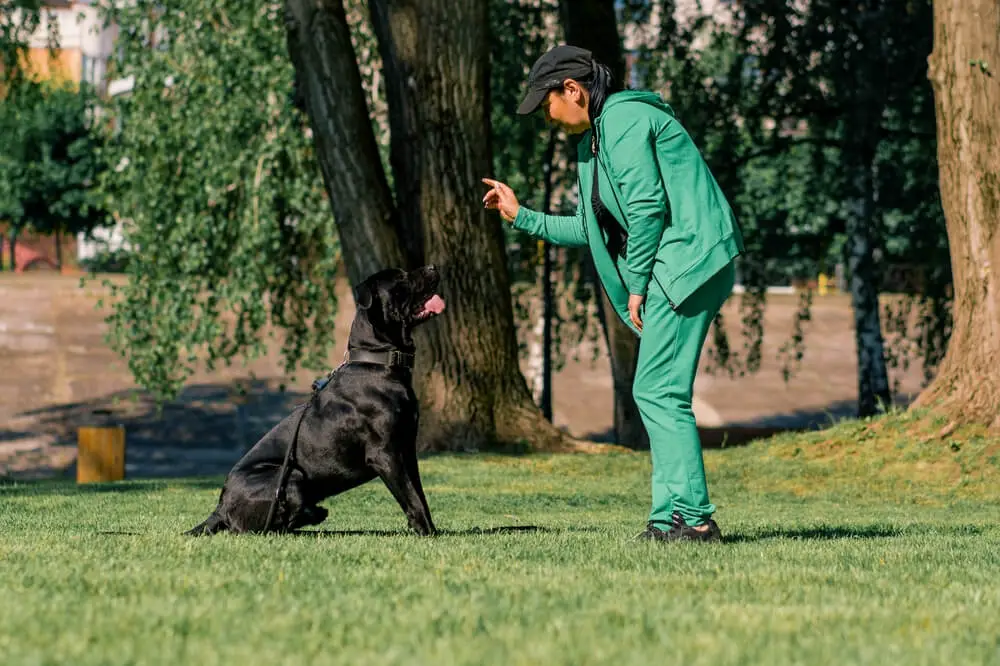Training a farm dog is an essential skill for any farmer or rancher. A well-trained dog can greatly contribute to the efficiency and productivity of your operation. Whether you’re a seasoned dog trainer or a first-time owner, mastering the basics of training is crucial for success.
there are several key factors to consider. From selecting the right breed to overcoming common challenges, this guide will provide you with valuable insights and techniques on How to train your farm dog efficiently.
Before we dive into the specifics, it’s important to emphasize the importance of patience and consistency in dog training. Remember, your dog is learning and adapting to new commands and behaviors, so be patient and understanding throughout the process.
Key Takeaways:
- Choose the right working breed for your farm, considering factors such as adaptability and temperament.
- Border Collies, Australian Shepherds, and Australian Cattle Dogs are common working breeds known for their intelligence and herding abilities.
- Start with basic commands such as sit, stay, down, and recall, using positive reinforcement techniques.
- Address common problem behaviors like hyper-alertness, reactivity, and nipping through proper training and management.
- Create an optimal training environment with minimal distractions and regular, engaging training sessions.
Selecting the Right Working Breed
Selecting the right working breed is crucial. Different breeds have specific needs and traits that make them better suited for certain farm tasks. Here are some key factors to consider when choosing a working breed for your farm: How to keep a farm dog from roaming?
1. Working Dog Breeds
- Border Collies
- Australian Shepherds
- Australian Cattle Dogs (Blue Heelers)
These breeds are known for their intelligence, herding instincts, and work ethic. Border Collies can handle any type of animal and are highly adaptable. Australian Shepherds are versatile farm dogs with exceptional loyalty. Australian Cattle Dogs are bred for driving and herding cattle but can also be used for other livestock.
2. Consider Your Needs
Think about the specific tasks and demands of your farm. If you have a large herd of cattle, a breed like the Australian Cattle Dog may be a good fit. If you need a dog that can work with different types of animals and adapt quickly, a Border Collie might be the right choice. Consider your farm’s size, terrain, and the type of livestock you have when selecting a breed.
3. Your Personality and Training Style
It’s important to choose a breed that aligns with your personality and training style. Some breeds may require a more assertive and firm approach, while others respond well to positive reinforcement and gentle guidance. Evaluate your training skills and preferences to ensure a good match between you and your chosen breed.
Basic Training Methods and Tips
Starting with the basics is essential. Teaching your dog foundational commands such as sit, stay, down, and recall will create a solid training framework. Use positive reinforcement techniques to reward your dog for desired behaviors, such as giving treats, praise, or engaging in playtime. This positive approach encourages your dog to associate good behavior with positive outcomes, making the training process more enjoyable and effective.
During training sessions, it’s important to minimize distractions to help your dog focus. Find a quiet area on your farm where you can conduct the training without interruptions. Keep the training sessions short but consistent to prevent your dog from becoming overwhelmed. Remember, each dog learns at their own pace, so be patient and understanding throughout the process.

Training Tips:
- Use positive reinforcement to reward good behavior
- Minimize distractions during training sessions
- Keep training sessions short but consistent
- Be patient and understanding
- Consider enrolling in dog training classes or seeking professional advice
Handling Common Problem Behaviors
Training a herding dog on a farm can come with its fair share of challenges. These intelligent and high-energy dogs may exhibit common problem behaviors such as hyper-alertness, reactivity, and nipping. However, you can effectively address and manage these behaviors with the right approach and techniques.
Common Problem Behaviors
- Hyper-alertness and Fixation: Herding dogs are naturally attuned to their surroundings, but excessive hyper-alertness and fixation can lead to anxiety and over-reactivity. To alleviate these behaviors, provide mental and physical stimulation through interactive toys, puzzles, and regular exercise to channel their energy and prevent boredom.
- Sensitivity to Noise: Some herding dogs may be sensitive to loud or sudden noises. Gradually desensitize them by exposing them to low noise levels and increasing the volume over time. Reward calm behavior and provide positive associations to noise to help reduce sensitivity.
- Reactivity: Herding dogs may display reactivity towards strangers or fast-moving objects. Socialization is key to managing reactivity. Gradually introduce your dog to new people, animals, and environments, ensuring positive experiences and rewards. Consistent positive social interactions will help them feel more confident and less reactive.
- Nipping: Nipping at ankles or heels is a natural herding instinct, but it can be problematic. Teach your dog appropriate outlets for their herding instincts, such as using toys or agility exercises. Carefully manage situations where nipping may occur and redirect their focus onto acceptable behaviors using positive reinforcement techniques.
Remember, addressing problem behaviors requires consistency and patience. Be proactive in providing outlets for stimulation and socialization. Seek guidance from a professional dog trainer or behaviorist if the behaviors persist or worsen.
By understanding and addressing these common problem behaviors, you can ensure that your herding dog becomes a reliable and well-behaved companion on your farm.
Creating an Optimal Training Environment
Creating the right training environment is crucial for effectively training your farm dog. Minimizing distractions and utilizing appropriate training tools can enhance your dog’s learning experience and maximize their potential. Here are some tips to help you create an optimal training environment:
Minimizing Distractions
- Start training sessions in a quiet and secluded area away from any distractions.
- Choose a time when your farm is calm and has minimal activities or noise.
- Show patience and understanding if unexpected distractions occur, and refocus your dog’s attention on the training task.
Utilizing Training Tools
- Consider using clickers or target sticks to teach new commands and behaviors.
- Clickers can mark desired behaviors, while target sticks help guide your dog’s movements.
- Introduce these tools gradually and ensure your dog responds positively to their use.
Remember that consistency and repetition are key when creating an optimal training environment. Providing a calm and focused setting can increase your dog’s ability to learn and retain new skills.

The Importance of Ongoing Training and Socialization
Training and socialization play a vital role in shaping the behavior and temperament of your farm dog. It is essential to understand that training should not be a one-time event but an ongoing process throughout your dog’s life. Consistent reinforcement of basic commands and behaviors will help maintain their obedience and reliability in various situations.
The Benefits of Ongoing Training
- Enhanced Skills: Ongoing training allows you to continuously challenge and stimulate your farm dog, enhancing their skills and abilities. Advanced training classes and participation in dog sports can provide mental and physical engagement, keeping your dog sharp and focused.
- Prevent Behavioral Problems: Regular training sessions help prevent the development of behavioral issues. You can ensure your farm dog remains well-behaved and responsive by reinforcing positive behaviors and addressing any problem behaviors promptly.
The Importance of Socialization
- Exposure to Different Environments: Regular socialization exposes your dog to different people, animals, and environments, ensuring they are comfortable and well-behaved in various situations. This helps prevent fear and aggression towards strangers or animals they may encounter on the farm.
- Confidence Building: Socialization builds your dog’s confidence and teaches them appropriate ways to interact with others. It helps them develop better social skills and reduces anxiety or fear in unfamiliar situations.
Conclusion
Training a farm dog is a challenging yet rewarding journey that requires patience, consistency, and a strong bond between you and your dog. By following these farm dog training tips, you can develop a reliable and well-behaved companion for your farm.
Selecting the right working breed is the first step towards training success. Consider each breed’s specific needs and traits, such as intelligence, herding instinct, and work ethic, to find a dog that suits your personality and farm requirements.
Training and socialization should be ongoing processes throughout your farm dog’s life. Continuously reinforce basic commands, expose your dog to different environments, and consider advanced training classes or dog sports to keep their skills sharp and prevent behavioral problems. With dedication and time, you’ll have a reliable farm dog that is a true asset to your farm.
Frequently Asked Questions (FAQs)
What are the key factors to consider when selecting a working breed for my farm?
When choosing a working breed for your farm, it is important to consider factors such as adaptability, temperament, and the specific needs and traits of each breed.
What are the basic training methods and tips for training a farm dog?
Basic training methods include positive reinforcement, using treats, praise, or play to encourage desired behaviors. Training sessions should be kept short but regular, and distractions should be minimized.
Is training and socialization an ongoing process for farm dogs?
Yes, training and socialization should be ongoing processes throughout your farm dog’s life to maintain obedience and prevent behavioral problems. Regular exposure to different people, animals, and environments is essential.
What is the importance of training a farm dog?
Training a farm dog is crucial for developing a reliable and well-behaved member of your farm. It helps establish a strong bond between you and your dog, enhances their skills, and prevents behavioral issues.

